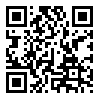پنجشنبه 8 آبان 1404
[Archive]
دوره 19، شماره 5 - ( 3-1400 )
جلد 19 شماره 5 صفحات 306-306 |
برگشت به فهرست نسخه ها
Download citation:
BibTeX | RIS | EndNote | Medlars | ProCite | Reference Manager | RefWorks
Send citation to:



BibTeX | RIS | EndNote | Medlars | ProCite | Reference Manager | RefWorks
Send citation to:
Yadegari Dehnavi M, Belali Kharaji M, Zare Mehrjerdi F, Pourentezari Zarch M. P-139 The histopathological effects of maternal caffeine consumption on testis, prostate, seminal vesicle and epididymis of male rat offspring (stereological study). IJRM 2021; 19 (5) :306-306
URL: http://ijrm.ir/article-1-3049-fa.html
URL: http://ijrm.ir/article-1-3049-fa.html
P-139 The histopathological effects of maternal caffeine consumption on testis, prostate, seminal vesicle and epididymis of male rat offspring (stereological study). International Journal of Reproductive BioMedicine. 1400; 19 (5) :306-306
چکیده: (390 مشاهده)
Background: Caffeine is an alkaloid of the methyl xanthine group. It is conceivable that caffeine consumption would induce gonadal changes.
Objective: The aim of this study was to assess the impact of embryonic caffeine exposure on rat testis, prostate, seminal vesicle and epididymis.
Materials and Methods: Female rats were divided into three major groups (n = 7) including: A control which only received drinking water. B and C groups received low dose of caffeine (26 mg/kg) and high dose (45 mg/kg) respectively via drinking water during pregnancy and lactation. Structural changes in testis, prostate, seminal vesicle and epididymis were studied by using stereological methods at 21, 60 and120 days of postnatal development.
Results: The result showed the decreases in body and testis weight and testis volume of offspring in group C compared to other groups at all ages (p < 0.05). There were significant differences in number of sperm cells of offspring of experimental groups compared to control group in different ages (p < 0.05). Number of sertoli, spermatogonia, spermatocyte and spermatid cells in group C showed a significant decrease compared with other groups at all ages (p < 0.01). The prostate of caffeine-fed groups presented various degrees of epithelial and stromal hyperplasia and epithelial cell proliferation in the prostatic lobes. In high dose caffeine treated group, epithelium height of seminal vesicle decreased, but it was not significant. The thickness of the muscle layer of seminal vesicles in high dose caffeine treated group increased compared to the control group (p ≤ 0.001 ). Significant decreases in epithelium height of tubules of epididymis in high dose caffeine treated group was seen compared with control group (p ˂ 0.05). In high dose caffeine treated group diameter of tubules of epididymis decreased (p ≤ 0.001).
Conclusion: Results showed that maternal caffeine consumption altered the structure of testis and prostate gland, seminal vesicle, epididymis, and spermatogenesis of offspring in adulthood.
Objective: The aim of this study was to assess the impact of embryonic caffeine exposure on rat testis, prostate, seminal vesicle and epididymis.
Materials and Methods: Female rats were divided into three major groups (n = 7) including: A control which only received drinking water. B and C groups received low dose of caffeine (26 mg/kg) and high dose (45 mg/kg) respectively via drinking water during pregnancy and lactation. Structural changes in testis, prostate, seminal vesicle and epididymis were studied by using stereological methods at 21, 60 and120 days of postnatal development.
Results: The result showed the decreases in body and testis weight and testis volume of offspring in group C compared to other groups at all ages (p < 0.05). There were significant differences in number of sperm cells of offspring of experimental groups compared to control group in different ages (p < 0.05). Number of sertoli, spermatogonia, spermatocyte and spermatid cells in group C showed a significant decrease compared with other groups at all ages (p < 0.01). The prostate of caffeine-fed groups presented various degrees of epithelial and stromal hyperplasia and epithelial cell proliferation in the prostatic lobes. In high dose caffeine treated group, epithelium height of seminal vesicle decreased, but it was not significant. The thickness of the muscle layer of seminal vesicles in high dose caffeine treated group increased compared to the control group (p ≤ 0.001 ). Significant decreases in epithelium height of tubules of epididymis in high dose caffeine treated group was seen compared with control group (p ˂ 0.05). In high dose caffeine treated group diameter of tubules of epididymis decreased (p ≤ 0.001).
Conclusion: Results showed that maternal caffeine consumption altered the structure of testis and prostate gland, seminal vesicle, epididymis, and spermatogenesis of offspring in adulthood.
نوع مطالعه: Congress Abstract |
| بازنشر اطلاعات | |
 |
این مقاله تحت شرایط Creative Commons Attribution-NonCommercial 4.0 International License قابل بازنشر است. |

